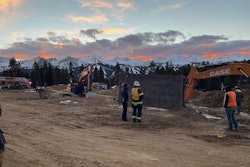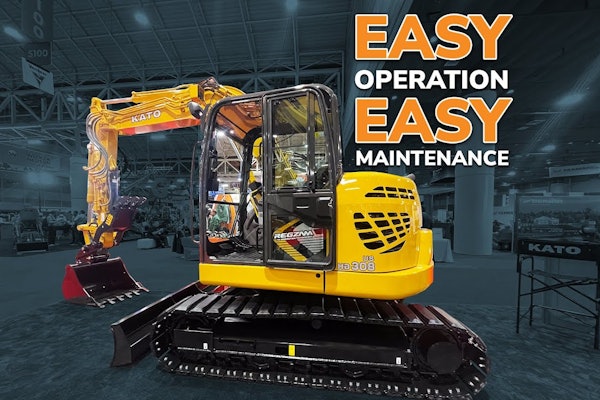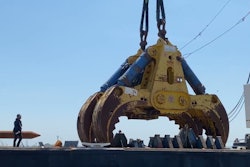
The construction industry is fighting a proposed rule change that could allow union representatives to accompany federal safety inspectors on non-union employers’ jobsites.
The opposition follows the U.S. Department of Labor’s proposal issued in August, called the “Worker Walkaround Representative Designation Process,” designed to clarify who may accompany OSHA compliance officers on inspections.
"This proposal aims to make inspections more effective and ultimately make workplaces safer by increasing opportunities for employees to be represented in the inspection process," said U.S. Assistant Secretary for Occupational Safety and Health Doug Parker in announcing the proposal August 29.
But major contractors associations argue the rule would undermine OSHA’s authority as an impartial investigator and view it as a backdoor way to bring unionization to non-union contractors.
“By allowing outside union agents access to non-union employers’ private property, OSHA is injecting itself into labor-management disputes and casting doubt on its status as a neutral enforcer of the law,” says Greg Sizemore, Associated Builders and Contractors vice president of health, safety, environment and workforce development. “Not only does the proposed rule negatively impact the rights of employers, but it also ignores the rights of the majority of employees who have not authorized any union to represent them.”
What the Proposal Says
Federal law currently allows employees to authorize a representative to accompany an OSHA inspector. The employer can also choose a representative.
A non-employee third-party representative can be chosen for “good cause” to help the OSHA inspector gather information about the jobsite conditions and hazards. Currently, those third parties can include safety engineers or industrial hygienists.
OSHA compliance officers currently have the “authority to determine if an individual is authorized by employees and to prevent someone from participating in the walkaround inspection if their conduct interferes with a fair and orderly inspection, or to limit participation to protect employer trade secrets,” according to the Department of Labor. That part of the rule would not change, DOL says.
Under the proposal, employees would have the right to designate an employee or ‘’may authorize a non-employee third party if the compliance officer determines the third party is reasonably necessary to conduct an effective and thorough inspection.”
The proposed rule would also broaden who could be the third-party representative and could include a representative of a labor union, an attorney or someone else of their choosing.
“Third-party representatives may be reasonably necessary because they have skills, knowledge or experience that may help inform the compliance officer's inspection,” DOL says. “This information may include experience with particular hazards, workplace conditions or language skills that can improve communications between OSHA representatives and workers.”
Supporters
Unions and workers’ rights advocates support the proposal, saying it would give workers a stronger voice in their safety as well as improve safety in high-hazard fields, such as construction.
“Millions of U.S. workers are injured on the job every year, thousands die from sudden workplace trauma, and tens of thousands lose their lives from long-term exposure to occupational hazards,” says Jessica E. Martinez, co-executive director of the National Council for Occupational Safety and Health (National COSH). “When workers have a strong voice – including the right to choose their own representatives during OSHA inspections – we have a real chance to prevent injuries and fatalities and reduce the toll of pain and suffering on workers and their families.”
The rule change would also better represent non-union workers, who don’t have as much protection as union workers under the current rule, they say.
“Giving workers the right to select someone as their representative is critical to ensuring their safety and health,” says Shelly Anand, co-founder and executive director of the Sur Legal Collaborative. “In a state like Georgia, where 96% of workplaces are non-union, workers need to ensure OSHA inspectors are able to view areas of the facility where workers are getting hurt, particularly in high-hazard industries like poultry processing, construction and manufacturing.”
Opponents
The Construction Industry Safety Coalition has submitted a letter opposing the rule change, signed by 22 of its members. Members include ABC, the Associated General Contractors, the American Road & Transportation Builders Association and the National Asphalt Pavement Association.
The coalition argues that the proposed rule would create unique risks for construction sites, especially ones with multiple employers that each have separate policies and procedures.
“The proposed rule ostensibly allows OSHA to invite anyone onto the jobsite, yet fails to address the knowledge or qualifications necessary of these designated third parties,” the coalition’s letter says. “Accordingly, employers are given a Hobson’s choice. They must either face potential liability arising from injury to unknown third parties or face regulatory action for objecting to the inspection in light of these concerns.”
The coalition also argues the rule change is “an exercise in overreach because it does not address an actual concern.”
It adds, “The proposed rule creates gray areas and fails to provide a procedure to protect both employee rights and employer rights to due process and lawful search and seizure.”
The coalition also believes the proposed rule would undermine OSHA’s purpose as mandated by Congress, “because it allows non-employee third parties to have unbridled and unrestricted responsibility and authority during the inspection process.”
It argues that the rule is vague as to who could be a third-party representative and what authority and influence those representatives would have in the investigation and settlement process.
What’s Next?
The DOL has been accepting public comments since August and extended the comment period to end November 13.
The construction coalition has called on DOL to hold public hearings on the proposal, as it says public comments alone are insufficient to consider all the complexities the rule could create.
If the rule takes effect, legal action by opponents is expected.
A similar rule enacted in 2013 under the Obama administration and later rescinded in 2017 by Trump faced federal lawsuits.













